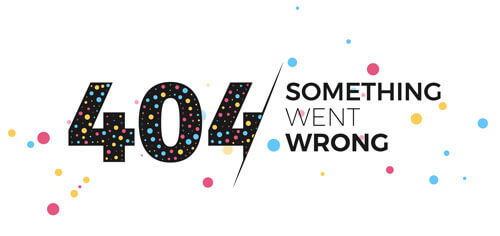Google processes over 3.5 billion searches daily. That translates to a search volume of 40,000 queries per second on an average day.
In an effort to continually create a better user experience, updates for Google occur regularly. Most are not on the grand scale of algorithms like Panda or Pigeon. Just a little tweak here and there.
On August 22, 2017, the digital marketing community noticed more than a little tweak. A major shift in local SERPs (Search Engine Results Page) occurred. Come to find out, it was Google updating what is referred to as “proximity” filters.
Adjusting proximity search was one of those updates Google rolled out on a local-only level. Google trying to make searches better for the local guys.
The update was immediately dubbed Hawk. We’ll tell you why a little later.
For now, we’ll break down Hawk and offer some advice on what to do, in case your business was affected.
Why Google Updates Happen

Who do you think Google’s ultimate customers are?
The businesses who pay for Adwords? Nope.
The app developers for Goolge Play store? Try again.
It must be the large number of Fortune 500 companies paying to use Google for Work. Not them either.
Google’s main customers, the ones they focus on pleasing the most, are their users. People like you and me who do our part adding to those 3.5 billion searches.
That’s why Google pays attention. Kind of like a doting parent.
Google wants users to be happy. Ultimately they want people to find the best match for their queries.
As long as businesses play by the rules and follow the guidelines, the updates for Google shouldn’t have much effect on their SERPs.
Unfortunately, there are plenty of unscrupulous folks out there who refuse to follow the rules. These black hatters, as they have been labeled, create a lot of the reasons Google continually shifts, revises, updates, and reconfigure their algorithms.
The Hawk update had a lot to do with that.
What Did the Hawk Update Do?
The Hawk was more of a revision than a completely new algorithm. It was in response to some deficiencies found in the Possum algorithm. (Yes, even Google isn’t perfect!)
Before we get into the specifics of Hawk we need to backtrack for a moment. Here’s a quick refresher course on the Possum algorithm.
Playing Possum
When Possum took effect it was a pretty big deal. Locally.
Many digital marketing experts called it one of the biggest updates for Google (affecting local searches) since the Pigeon algorithm from 2014. Possum focused on the filters that Google uses to rank local businesses in search results.
The filter’s purpose was to prevent a local business from having multiple listings (for that same business). Before, if a competitor figured this out they could effectively dominate searches. The result: push similar businesses in the area right off the first page.
Google’s intentions were noble.
What happened was that some of the wheat was thrown out with the chaff.
 The Possum filter ended up being a bit too broad. Businesses located in the same geographical area, and offering the same services, appeared to Google as duplicates. Thus, legitimate companies ended up filtered out of local searches.
The Possum filter ended up being a bit too broad. Businesses located in the same geographical area, and offering the same services, appeared to Google as duplicates. Thus, legitimate companies ended up filtered out of local searches.
Enter Hawk. It plunged into a deep dive, targeting the Possum filters.
Although the filters didn’t play dead, they did shrink back. The reduced geographical areas broadened the scope of businesses sorted from a query.
And, voila! More businesses popped up in searches.
How Can the Hawk Update Affect Your Business?
First off, it’s important to realize that these latest changes were a highly focused local-only update. Businesses who do not market themselves on a local level shouldn’t see any change in organic search results.
Hawk is designed to help Google offer better search experiences for local organic results. Criteria are input. SERPs spit out matches to the criteria “near me.”
On par for the Google course, this new update creates a much better user experience.
Customers searching for a specific product or service receive matches fitting their parameters more accurately. They have options from legitimate companies, rather than those simply priming for a top spot. And the best yet — the majority of results for their search will be in close proximity.
Thank you, Google. We love good User experience.
The Hawk algorithm had both positive and negative effects for local businesses.
Here are a few events from the aftermath:
Drop in Ranking
Unfortunately, this could be your experience, even if you’re following all the rules for listing your business. Updates for Google often remedy older issues, while having effects on everyone.
If there are businesses similar to yours in the near vicinity they may have been wrongly filtered out by Possum. The new filtering process opened the door, putting them back into the ranking position they deserve.
If that company happens to have a stronger ranking power, a higher rating in organic search, or a longer history (their listing dates back farther), it was moved to the deserved position. It’s possible that businesses previously showing were bumped.
A Listing on the First SERP for Your Specific Industry
Finally!
If this is your experience, then the update worked for your business. That was the entire purpose.
A case study conducted by Joy Hawkins, a regular contributor to SearchEngineLand, goes into some serious detail. You can read Joy’s findings here.
Removal of “Fake” Competitors
We discussed this earlier and it’s still an unfortunate truth. There are some shady characters out there trying to do what they can to cheat Google’s systems. The majority of these fake listings come from spammers.
 Spammers create multiple fake listings for businesses in order to . . . you guessed it . . . spam. And updates for Google don’t catch them all.
Spammers create multiple fake listings for businesses in order to . . . you guessed it . . . spam. And updates for Google don’t catch them all.
One of the most common spamming techniques is to create false storefronts. Google, in their all-knowing wisdom, cannot tell if a physical address listed for a business has an actual business operating there. If the address is legitimate, Google will move on.
This is one reason Google does not allow a business to list a Post Office Box as an address. The problem is that many UPS stores sell “boxes” with a physical street address. This is how spammers continue to operate.
We’ll discuss what you can do to put a stop to spammers and shady competitors in a moment.
Removal of Real Competitors, Not Playing Fair
Sad, but true. Some of your competitors may be trying to rank you out of the search results in your area by trying to “trick” web crawlers. Hawk’s proximity filters may have caught some of these and filtered them out accordingly.
Sometimes updates for Google let things fall through the cracks. If you conduct searches in your area for businesses similar to yours and find a competitor not playing fair there is you can take action.
Do your due diligence by reporting them to Google.
Reporting Spammers and Other “Cheaters”
 If you come across a business trying to monopolize local searches by creating multiple listings of the same business, the first step is a “neighborly” one. You can go to Google maps and kindly “Suggest an Edit.”
If you come across a business trying to monopolize local searches by creating multiple listings of the same business, the first step is a “neighborly” one. You can go to Google maps and kindly “Suggest an Edit.”
Steps for changing a listing in Google Maps:
- Sign into your Google account and open Google maps
- Search for the business in question
- On the left, scroll down and click “Suggest an Edit“
- Follow the instructions
- Submit it to Google
Did Your Business Feel the Effects of Hawk?
One of the best ways to ensure this doesn’t happen is to continually check Google’s Webmaster Guidelines. Follow the rules and stay away from all the no-nos. You will rarely see a negative effect on your rankings after new updates for Google or new algorithms are rolled out.
If you’re not sure that your site ranking changed after the update, here are a few ways you can check.
Do Some Sleuthing
Google search results are specific to each individual computer or mobile device. The search results shown to you are dependent on your browsing history, website interests, and most importantly, your location.
So conducting a search for your business, as usual, can produce misleading results. The SERP may show your business listed where it normally has been. This happens because Google knows you search for a site (in this case, your own) often.
Although you may see your site, it may not show up for the searcher across town.
If you want to check your ranking, conduct your search in private or incognito mode. Another way to get around this is to enlist the help of someone who does not search for your site regularly.
Check Your GMB
Many businesses don’t realize that Google My Business is really important.
Make sure all the information about your business is accurate and up-to-date. Especially if you feel you’ve been affected by updates for Google.
Verify that your phone number, street address, ZIP code, and e-mail address are perfectly accurate. Typos matter. Correcting any errors in your listing needs to be a top priority.
If you haven’t claimed your business do it today. It’s FREE.
Fill out the information about your business with as much detail as possible. If a searcher has the option between yours or your competitor’s, make yours stand out the most.
 We suggest you:
We suggest you:
- Have a local phone number in your listing
- Make sure your business address is consistent with the address shown on your site
- Verify all addresses are the same if you list your business in other local directories
- Upload a profile image and cover photo (they should be high-resolution)
- Add a gazillion photos* (or at least as many as possible)
- Represent your company’s open/close hours accurately
- Always respond to customer reviews posted on GMB
*Some interesting stats from Google: Businesses with photos in their listings receive 42% more requests for driving directions on Google Maps and 35% more click-thrus to their websites.
What to Do About Hawk Updates for Google
If you saw a change in your rankings after August 22, then you may have been re-filtered by the Hawk update.
If you find yourself in this situation there are several things you need to implement right now. Put the following into action so the next time updates for Google hit the internet, your business jumps to the top.
Curate Consistent Content
Blogging isn’t a trend anymore. It’s a necessity for building a superior online presence. Even Google, who loathes confirming what their ranking factors are, encourages content.
But not just any ‘ole content. It has to be relevant to your business, helpful to users, and freshened up regularly.
Creating helpful, SEO friendly content needs to move to the top of your list if you haven’t started yet.
Focus on Word-of-Mouth
 Having more user reviews (good or bad) is a positive ranking factor with Google. It’s important to encourage your customers to leave reviews.
Having more user reviews (good or bad) is a positive ranking factor with Google. It’s important to encourage your customers to leave reviews.
A great way to encourage customers to write a review is to offer some type of incentive. Giveaway a free appetizer, offer a 20% discount on the next service or come up with your own unique reward.
It’s an easy and cost-effective way to get a boost in your rankings.
The best practice when it comes to reviews is to respond.
Businesses who respond to customer comments rank higher in SERPs than those that don’t. A leading reviewers site, Yelp, offers excellent tips on responding to customers. Check out this advice on how to handle both positive and those not-so-glowing reviews.
Maximize Local Keyword Search
For your business to even have a presence on search engine results pages your content must be relevant. Google determines relevancy by the words on your site.
Use the Google Keyword Planner to find low-competition, highly used keywords. It’s an excellent tool to research words or phrases that describe your products or services.
To use the GKP you will need to complete the AdWords account set-up. But you don’t have to spend money on an AdWords campaign to use the tool.
Get creative. And don’t forget to check up on your competition.
It’s also a great practice to research keywords after updates for Google hit. There may be new opportunities or keywords to drop.
Avoid Common Mistakes
Regardless of what the updates for Google are meant to fix, some things must be avoided all the time. There are many SEO tactics that have gone by the wayside because they will now get a penalty from Google when used.
 Here are 10 common mistakes you should correct immediately:
Here are 10 common mistakes you should correct immediately:
- Broken Links
- Outdated or No Content
- Too Many On-Page Links
- Hard to Find Content
- Competing Categories
- Recurring Low Word Counts
- Poor Site Search Tools
- Keyword Stuffing
- Using Headings Improperly
- Forgetting to Funnel
For detailed explanations on these, plus 7 more things to avoid, read our article “17 SEO Web Design Mistakes Google Will Slay You Over.”
It’s important to educate yourself on what Google is looking for in a website.
Soar to New Heights
So why the name Hawk?
According to Joy Hawkins, who christened the latest update, it’s “because hawks eat possums”.
Like a Hawk plunging into a deep dive before attacking its prey, it’s time for local businesses to dig deep into their search rankings.
Don’t wait until the next updates for Google roll out. It’s time to develop a proactive, rather than reactive strategy.
A good digital marketing strategy requires constant monitoring, updating, and reinventing. Contact our professional SEO, SEM, and social media agency. We can help.
Owner and Chief Marketing Officer, Jason Hall, and his team specialize in creating brand awareness / traffic and lead generation / marketing funnel and conversion optimization, while utilizing the appropriate marketing channels available within your industry. With diverse clients throughout the world, Jason's team is well connected within many industries to assist with your marketing strategies. With no long term contracts and various levels of service, Jason's team will increase the quality of your online traffic, leads, and sales.
About the author...
Located in the heart of the Emerald Coast - Destin, FL, founder and Chief Marketing Officer, Jason Hall, and his team specialize in creating brand awareness / traffic and lead generation / marketing funnel and conversion optimization / and PR campaigns, while utilizing the appropriate marketing channels available within your industry.
With diverse clients throughout the world, Jason's team is well connected within many industries to assist with your marketing strategies. With no long term contracts and various levels of service, Jason's team will increase the quality of your online traffic, leads, and sales.









